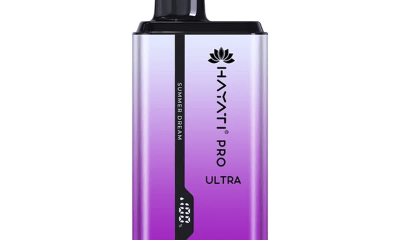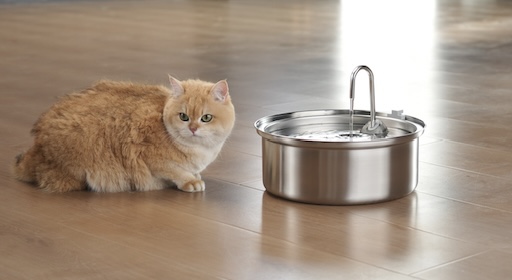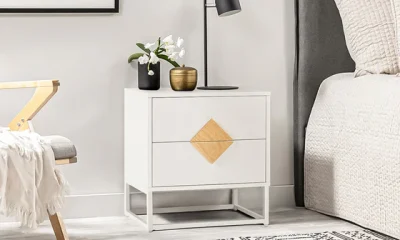Health
Bodybuilding for Beginners: 10 Tips to Get You Started
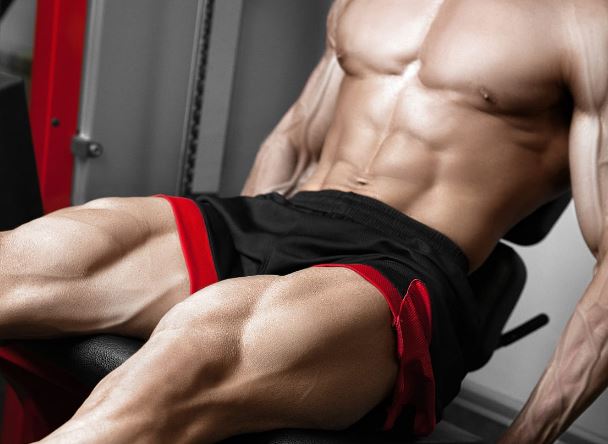
Are you trying to grow your muscles, but you’re not sure where to start? Whether you want to be a professional bodybuilder or you’re just looking to improve your physique, it’s intimidating to get started.
You see all of those people with shapely muscles lifting the heaviest weights in the gym and get discouraged, right? We’ve been there.
Lucky for you, we have a list of tips for bodybuilding for beginners. From good bodybuilding exercises and workout structures to overall bodybuilding basics, these tips will get you started off on the right track.
Get ready to take notes and head to the gym. Read on for more.
1. Determine Your Overall Goals
Before you start your bodybuilding journey, it’s a good idea to get an idea of what your goals are. Are you trying to build lean muscle for a well-balanced and strong body? Do you want to lose fat, or are you happy with just gaining strength?
Do you have any specific body goals or fitness inspirations that you want to match up to?
Keep in mind that all bodies are different. If you have a specific athlete, bodybuilder, or fitness guru that you want to emulate, you may not get the same body even if you follow their routines to a T.
This doesn’t mean that you can’t try. Your body goals may change over time as you discover what looks best on you. You may find that you prefer your body with less or more bulk. You may like yourself shredded and lean, or you may like some extra body fat.
When you know your goals, write them down somewhere that you can see them all the time. As you start approaching them, check them off and develop new ones.
2. Shed Your Gym Anxiety
Gym anxiety is one of the biggest hurdles for beginners. When everyone else looks stronger than you, how are you supposed to feel confident going to the gym?
Try to put it out of your mind. Everyone starts somewhere, and these bodybuilders were once at the same level that you’re at now.
It’s helpful to keep in mind that other people aren’t nearly as interested in what you’re doing as you think they are. At the gym, most people are focused on their workouts so they can get them done in time and perform to their best ability.
If someone does take notice of you, it may be because of your form, because they want to try an exercise that you’re doing, or because you simply caught their eye when you passed into their line of vision.
People are more likely to be impressed with a newcomer aiming to better themself than they are to be critical. If you notice people laughing near you, rest easy knowing that they’re friends talking and joking, not mocking you.
If you’re still anxious, try going to a gym with extended or overnight hours. Go at a time of day where there are fewer people so you can get your bearings before you’re ready to be “public.”
3. Take Initial (and Progress) Photos
Progress photos are so motivating! Take a photo at the beginning of your journey and every week or two afterward.
The first photo can be hard if you’re dissatisfied with your physique. Again, remember that this is a starting point, and later on you can reference this photo to see how far you’ve come.
While it might not seem helpful to take photos often, it’s the best way to notice small changes that you wouldn’t otherwise see in the mirror.
Take photos at the same time every day (preferably in the morning before meals) so you don’t have any discrepancies.
4. Start Slow
Going gung-ho into your new workout routine without careful planning and attention to your actual capabilities is a recipe for disaster and injuries. Try not to overdo it.
Some people get too ambitious with their weights from the beginning. They might be ashamed of lifting lower weights and they let their pride get in the way of their progress. If you can only lift 10 lbs per hand, that’s a valid starting point.
When you start slow and make gradual progress, you’ll find that you’ll improve faster and your routine will be more sustainable.
5. Create a Sustainable Workout Routine
Speaking of sustainability, creating the right workout routine that allows sustainable progress is crucial if you don’t want to burn out early on.
The first aspect of this is your time commitment. While bodybuilding requires a lot of discipline and a large time commitment, you need to fit it into your schedule in a way that won’t overwhelm you.
As we mentioned before, finding a gym that has extended hours is helpful. This allows you to fit your workouts into whatever time that you have to spare after you’re done with your responsibilities.
Keep in mind that it’s okay not to exercise every day. If a sustainable routine is three times per week, that’s valid and you’ll still make progress.
Sustainability also includes making progress the right way. Most people suggest using the progressive overload technique to build muscle.
Progressive overload is when you gradually increase your repetitions or weight over time in small increments. This allows you to make progress faster with a lower risk of reaching a plateau in your training.
6. Find the Right Exercises for You
Different goals require different exercises, but you want to have a well-balanced routine.
Many people make the mistake of ignoring certain body parts when they’re trying to build their physiques. That’s where the joke of “skipping leg day” comes from.
Overall, doing this isn’t helpful. When you work to strengthen the entire body, you’ll find that your progress is easier in the muscles that you want to focus on. For example, some lower body exercises are also great for your core. You need a strong core to protect your back when you’re doing some heavy upper-body exercises.
This also means that you shouldn’t neglect cardio (another common problem with people who are too devoted to building muscle).
It’s a good idea to create a workout split. This means that you’re focusing on different areas of your body on different days. When you do this, you can still go to the gym while your muscles are recovering.
Common Bodybuilding Exercises
So what kinds of exercises should you do to get started?
As you start to develop your own routines and put research into your goals, you’ll discover new exercises that target the specific areas in which you’re lacking.
To get started though, there are a few exercises that play a strong role in every bodybuilder’s gym routine.
For your lower body, you want to include deadlifts, lunges, and squats, among other things. While deadlifts and squats are often done in their standard varieties for the greatest effect, there are plenty of variations of lunges that can target different areas of your legs and glutes.
For your upper body, the exercises have more variety. When you’re working on your chest, you want to include a classic chest press, chest flies, and reverse flies as your “always go-to exercises.”
Other good upper body exercises include dumbbell pullovers, bicep curls, overhead presses, and even tricep tips. You want to make sure that you cover all sides of your arms.
As far as your core goes, you eventually want to move beyond classic planks and sit-ups. Instead, opt for weighted core exercises once you’ve developed some core strength.
7. Don’t Neglect Rest Days
We get it. You want to see progress as fast as possible, right? So you’re at the gym every day overworking your muscles and burning the candle at both ends.
This is a great way to get burned out or even injured. Even when it feels unnatural, you need to incorporate rest days into your routine. One of the best muscle-building tips that we can offer is to make sure that you rest.
Rest days can help you build and maintain muscle. When you do heavy workouts, your muscle fibers develop small tears. This is how they grow. Rest days allow those tears to repair so you’re ready to workout again.
Your rest days can be active rest days if you prefer that. This means that you aren’t sitting around motionless (though this is also a valid option), but you’re doing something easy enough that it gets your blood flowing without putting excess strain on your muscles.
This is a good day for low-intensity cardio, like a walk or a bike ride around your neighborhood. If you need to work on your flexibility, consider doing yoga or pilates instead.
Taking care of your body is essential when you’re trying to grow muscle.
8. Get Your Diet In Check
Exercise is only half of the battle when it comes to building your body into your ideal physique. You also need to make sure that your diet is working for you, not against you. After all, it’s a common saying that abs are built in the kitchen.
So what does this mean for you?
Many people who are starting their bodybuilding journey are trying to lose fat first. If you’re trying to build muscle, though, you want to make sure that you’re consuming enough calories that you aren’t wasting away.
This is another area in which it’s important to know your goals. If you’re dedicated to cutting fat, consider doing that first or accepting that you won’t have an easy time cutting it completely while you’re building muscle.
Use an online macro calculator to get a rough idea of what your diet should include based on your age, weight, height, and overall goals. You want to make sure that you have a healthy and well-balanced diet that’s rich in protein. Most people also perform better when they consume sufficient carbohydrates.
Keep in mind that carbs are your friends. While low-carb diets are valid, carbs are what can give you a lot of energy for your workouts.
9. Consider Supplements
There’s nothing wrong with using supplements when you’re trying to build your body. There are plenty of different kinds of supplements, so there’s sure to be something for your needs.
The most common supplement that people use is extra protein. Protein supplements come in all different forms, like cookies, chips, and even breakfast foods like pancakes.
That said, the most common and affordable protein supplements are bars and powders. They’re easy to bring with you on the go and they’re quick and easy energy.
BCAAs (branched-chain amino acids) are also popular. They’re supposed to decrease your fatigue, boost muscle growth, and improve your performance while you’re exercising. The powders often come in caffeinated and flavored varieties
Finally, some people have been turning to SARMS for their performance. SARMS are performance-enhancers that may help you build muscle and lose fat. This makes them a tempting choice for beginner bodybuilders. You could also consider steroids for sale in your supplements as these can also help in making your bodybuilding journey successful. There are several places that you can find SARMS for sale to suit your needs.
10. Don’t Give Up
It’s easy to get discouraged when you’re trying to start your bodybuilding journey. While you’re building your physique, make sure that you’re noting your progress with your pictures and updating your goals as you go.
Consistency with your diet and exercise program is key. If you don’t give up, you’ll notice visible changes in no time.
Consider joining online forums or finding an accountability partner at the gym to keep you on track. This is often enough to keep you motivated so you can reach your goals.
Bodybuilding for Beginners: Are You Up to the Challenge?
Armed with these bodybuilding basics, are you ready to hit the gym? Bodybuilding for beginners isn’t easy, but it’s a fun and rewarding process that leads to incredible results, regardless of your goals.
You’re well on your way to improved fitness, stronger muscles, and a physique that you’ll be proud of. Don’t quit now!
For more helpful health and fitness articles (among other things), visit the rest of our site!
Health
The Hidden Dangers of Dehydration: How It Affects Your Body
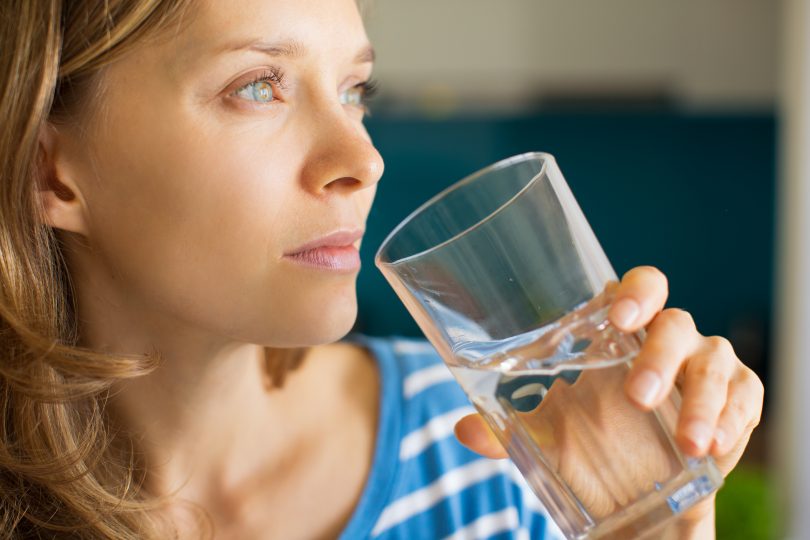

Dehydration is more than just feeling thirsty; it can significantly impact your body and its functions. Staying hydrated often takes a backseat with summer heat waves, strenuous activities, and busy schedules. Understanding how dehydration affects your body and discovering effective solutions, such as IV therapy, can make a world of difference in maintaining your health and well-being.
The Effects of Dehydration on the Body
Water is essential for nearly every function your body performs. When you don’t consume enough fluids, your body begins to experience a range of adverse effects. Here are some of the key ways dehydration impacts your body:
Reduced Cognitive Function: Dehydration can impair brain function, affecting concentration, memory, and mood. Even mild dehydration can cause headaches, dizziness, and fatigue, making it hard to focus on tasks.
Physical Performance: Dehydration can significantly hinder physical performance for athletes or those who engage in regular exercise. When the body lacks sufficient water, muscle cramps, decreased endurance, and a higher risk of heat-related illnesses are expected.
Digestive Issues: Water aids in digestion by helping break down food and absorb nutrients. Dehydration can cause constipation and other digestive discomforts, as your body struggles to process food without adequate hydration.
Kidney Function: Your kidneys rely on water to filter waste from the blood and produce urine. Chronic dehydration can lead to kidney stones and even kidney damage over time.
Skin Health: Your skin is the largest organ and needs water to maintain its elasticity and suppleness. Dehydrated skin can appear dry, flaky, and more prone to wrinkles.
Cardiovascular Health: Dehydration reduces blood volume, making it harder for your heart to pump blood efficiently. This can lead to increased heart rate and low blood pressure, potentially causing serious complications.
Combatting Dehydration with IV Therapy
While drinking water is the most straightforward way to stay hydrated, there are times when our bodies need a more immediate solution. IV therapy offers a fast and efficient method to rehydrate and replenish essential nutrients.
What is IV Therapy?
Intravenous (IV) therapy directly infuses fluids, vitamins, and minerals into the bloodstream. This method allows for 100% absorption of these vital substances, bypassing the digestive system and providing immediate hydration and relief.
Benefits of IV Therapy for Dehydration
Rapid Rehydration
IV therapy from IV Minnesota delivers fluids directly into the bloodstream, allowing for quick and efficient rehydration. This is especially beneficial for severely dehydrated individuals or those unable to consume enough fluids orally.
Electrolyte Balance
Dehydration often leads to an imbalance of electrolytes like sodium, potassium, and magnesium, which are crucial for various bodily functions. IV therapy can include these electrolytes, helping restore balance and prevent complications such as muscle cramps and irregular heartbeats.
Enhanced Nutrient Absorption
IV therapy can include vitamins and minerals that boost your immune system, improve energy levels, and support overall health. This is particularly useful for individuals with nutrient deficiencies or those recovering from illness.
Improved Recovery
Athletes and fitness enthusiasts often use IV therapy to speed up recovery after intense workouts. Combining fluids and nutrients helps reduce inflammation, muscle soreness, and fatigue, promoting quicker recovery times.
Convenience and Customization
IV therapy sessions are typically quick, lasting 30 to 60 minutes. Treatments can be customized to address specific needs, such as hydration, energy boost, or immune support.
Conclusion
Dehydration can profoundly impact your health, affecting everything from cognitive function to skin health. Recognizing dehydration’s signs and its effects is crucial for maintaining your well-being. While drinking water remains essential, IV therapy is a powerful tool for combating dehydration, providing rapid rehydration and other health benefits. Whether you’re recovering from a strenuous workout, an illness, or simply looking to boost your overall health, IV therapy can be an effective and convenient solution. Stay hydrated, stay healthy, and consider the benefits of IV therapy as part of your wellness routine.
Health
Benefits of Maintaining Healthy Testosterone Levels
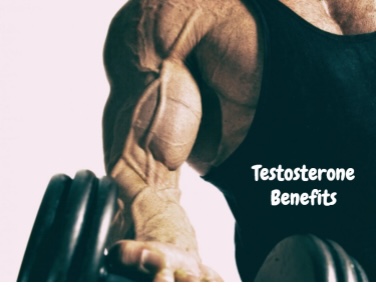

Testosterone is a hormone that is naturally produced by the body. It’s responsible for many important functions in both men and women, including sexual development, muscle mass, bone density, fertility, and much more.
But when testosterone levels drop below the recommended range for men—which can occur due to age or medical conditions—it can lead to some serious health issues.
Testosterone hormone is essential for the development of male reproductive tissues. It also plays an important role in regulating other functions of the body such as muscle mass, bone density, and sex drive.
If a man’s testosterone levels are too low, it can lead to various health issues. There are many effective testosterone supplements over the counter that help boost testosterone production in the body.
In this article, we will discuss how healthy testosterone levels can improve your life.
Read on to learn about the benefits of maintaining healthy testosterone levels.
Benefits of Healthy Testosterone Levels
Healthier testosterone levels provide numerous benefits for men including improved mood regulation, increased sex drive, and increased muscle mass.
However, it is important for men to consult with their doctors before taking any supplements or making drastic lifestyle changes related to increasing their testosterone levels as these measures could potentially result in adverse side effects if not undertaken correctly under proper medical supervision.
Additionally, healthy lifestyle choices such as regular exercise and eating well-balanced meals can help maintain optimal testosterone levels without any additional supplementation being required!
All these steps together should ensure that you reap all the benefits associated with having healthy testosterone levels!
Physical Benefits
One of the most well-known benefits to optimizing testosterone levels is increased physical performance. Studies have shown that boosting testosterone can increase muscle mass, lean body mass, strength, power, endurance and aerobic capacity. This makes it a great option for athletes who are looking to improve their performance in the gym or on the field. It can also be beneficial for those looking to reduce body fat percentage.
Testosterone hormone has impact on almost all body function including voice frequency and voice pitch. Studies report hat testosterone may also lower your voice.
Increased testosterone has also been linked to reductions in fatigue and an increase in energy levels.
Mental Benefits
In addition to physical performance gains, there are mental benefits associated with increasing your testosterone levels as well. Studies have suggested that higher testosterone levels correlate with improved cognitive function including better memory recall and improved learning abilities.
Additionally, higher testosterone can give you a greater sense of confidence which may result in improved social interactions as well as reduced stress level.
Muscle Mass and Bone Density
Testosterone helps build muscle mass and strength. When it drops below the normal range, it can lead to decreased muscle mass and even weakness in some cases. Low testosterone levels are also associated with an increased risk of osteoporosis or weakened bones due to decreased bone density.
Testosterone plays an important role in muscle growth as it helps build muscle mass by stimulating protein synthesis within the body’s cells. Men who have higher levels of testosterone tend to have greater muscle mass than those with lower levels of the hormone due to its effects on protein synthesis.
Not only does this help them look better but also improves their performance during physical activities like sports or workouts at the gym.
Mood Regulation
Low testosterone levels can cause depression, anxiety, and irritability in men. Studies have shown that men who have higher testosterone levels tend to be more relaxed and confident. This can lead to increased productivity at work and better relationships with family and friends.
Additionally, when men are more relaxed, they are able to focus on their tasks with greater clarity and be more productive throughout the day.
Low testosterone levels have been associated with depression, low libido, fatigue, and irritability in both men and women. Studies have shown that increasing testosterone levels can help improve mood and brain productivity significantly in those who experience these symptoms as a result of low testosterone levels.
Improved Sex Drive
A healthy level of testosterone helps improve a man’s libido or sex drive. When testosterone levels are low, men may experience a decrease in sexual desire or interest which can lead to issues in relationships with their partners or even depression if left untreated.
Studies have found that when men increase their testosterone levels through supplementation or lifestyle changes such as exercise and dieting, they often report an increase in libido which leads to improved sexual performance.
Healthy Weight Management
Finally, increasing testosterone can be beneficial for healthy weight management as well as sexual health concerns such as erectile dysfunction or low libido.
Higher estrogen is associated with increased fat storage around your waistline; so by optimizing your hormone balance (including estrogen) you may be able to reduce stubborn belly fat more easily than relying on diet and exercise alone.
Improved Libido and Fertility
In men, low testosterone levels can lead to infertility due to decreased sperm production. In women, it can cause irregular menstrual cycles or other hormonal imbalances that may interfere with conception or carry risks during pregnancy. Increasing testosterone levels has been shown to improve fertility rates in both sexes.
Low libido is one of the most common symptoms of low testosterone levels in both men and women. Increasing testosterone levels has been shown to increase libido significantly in those who are experiencing this symptom as a result of their low hormone levels.
Conclusion
Healthy testosterone levels are important for maintaining good overall health for both males and females alike. It plays an important role in sexual development, muscle mass, bone density, fertility rates, libido, and even moods!
If you think your hormone level might be lower than normal for your age or gender group, speak with your doctor about potential treatments that could help restore them back into the normal range! Maintaining healthy testosterone levels is just one step towards achieving better overall health!
Improving your hormone balance can lead to a host of positive effects—both physical and mental—and optimizing your testosterone is no exception!
From physical performance improvements like more strength and less fatigue to mental clarity gains like improved cognition and increased confidence—healthy levels of testosterone have something for everyone!
For those looking for weight loss assistance or sexual health improvements you’ll likely find some relief through proper hormone balancing as well!
The best way to know if boosting your testosterone will provide any benefit is by talking with a medical professional about having your hormone levels checked today!
Health
Hyperbaric oxygen therapy aids in natural healing
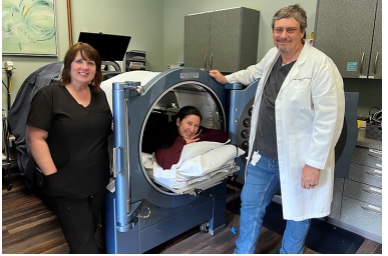

Natural healing is the process of the body through which it resists any external factor to change its internal environment. This resistance to the external factors is done by the system called the immune system. Healing requires the growth and production of new cells and removal of old worn out cells. This is done by the body itself but requires proper fuel for this and the fuel is no doubt, OXYGEN!
How does hyperbaric oxygen therapy boost the immune system?
For proper natural healing, the white blood cells require a generous amount of oxygen rich blood to knock out the bacteria. This oxygen level is not met in a normal environment. Because under normal conditions very little oxygen is carried out by the red blood cells.
This will lead to slow or sometimes no natural healing. In such circumstances, bacteria overcome the body and lead to infection. Such infections are really common especially in wounds. Then, high doses of antibiotics are indicated.
To prevent such circumstances, hyperbaric oxygen therapy is a good option. As we all know, oxygen is supplied under high atmospheric pressure. This will cause a tenfold increase in oxygen concentration of blood plasma, leading to the rush of oxygen rich blood to the affected site and thus strengthening the immune system.
HBOT provides adequate oxygen to the white blood cells and also flushes out the toxins out of the body, which leads to the strengthening of the immune system thus accelerating natural healing.
How does it supports in healing of the body:
Immune system only stops and kills bacteria but the damaged cells also need to be repaired. Our bodys have a natural tendency to repair itself. This is done through cell division and apoptosis (programmed death of worn out cells). All this process needs a proper supply of oxygen rich blood to the targeted site.
The damage of the cells is always followed by the inflammation of surrounding blood vessels which comprise the blood supply and cause delayed healing. The high oxygen saturation from HBOT enhances the ability of red blood cells to change their shapes. This allows them to pass through the inflamed vessels thus accelerating the healing process.
The research evidence is still not very strong but most of it supports this. The oxygen fluctuation due to HBOT therapy causes the release of growth factors in the body. These growth factors help to grow the new cells which replace the older worn out cells. Thus helps in growth and healing.
A study published in 2008 showed that hyperbaric oxygen therapy is helpful in the healing of diabetic foot ulcers. The mechanism behind it is similar to natural healing.
Is it safe?
HBOT is preventive and supportive therapy. It is non-invasive and painless and brings comfort to the user, so it is safe to use. The use of HBOT for rejuvenation, healing and preventive purposes is usually harmless. However, the timing of the sessions should be within normal limits because “excess of everything is bad.” You can have your own HBOT chamber in your house and can have your session anytime. They are user friendly so you can use them easily.
What are the protocols ?
HBOT is a simple therapy which is most commonly used for the preventive and rejuvenating purposes. The protocols of HBOT are following:
- The duration of each session ranges from 30 minutes to 120 minutes. It totally depends upon the goal.
- In general, for health optimization the duration should be 60 minutes.
- The pressure ranges are 1.5 to 3 atm
- For central nervous system benefits, the pressure should be from 1.5 to 2 atm
- For other health benefits higher pressures can be used.
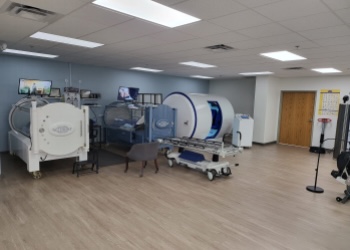

Which is the best HBOT chamber in the market?
This might be the next question popping in your mind. The answer to this question is Oxyhelp Hyperbaric Chambers. They produce the most luxurious and reliable oxygen chambers that money can buy today.
They are user friendly and pocket friendly. The internal environment is designed according to the comfort of the user and is completely antiseptic. The sealed doors and internal controller are also marking features.The size of the chamber is also accommodating so you don’t need to worry about the space. In a nutshell, Oxyhelp chambers are all in one deal so grab yours ASAP!
-



 Biography5 years ago
Biography5 years agoJacqulyn Elizabeth Hanley is the Mother of Liza Soberano?
-



 Home4 years ago
Home4 years agoEpson L3110 Driver Free Download Latest Updated Version
-



 Games3 years ago
Games3 years agoBest Free To Play MMORPG To Try This 2021
-



 Biography5 years ago
Biography5 years agoAmanda Levy Mckeehan Biography, Family, Net Worth, Age, Affairs, Facts
-



 Biography5 years ago
Biography5 years agoWho is Rose Dorothy Dauriac? Scarlett Johansson Daughter?
-



 Biography5 years ago
Biography5 years agoJessica Ditzel Secret Information that Nobody Knows | Joe Rogan’s Wife
-



 Biography5 years ago
Biography5 years agoWhat is the relation of Nathaniel Larry Osorno with Liza Soberano?
-



 Home5 years ago
Home5 years agoLiza Soberano Biography, Age, Family and Boyfriends



